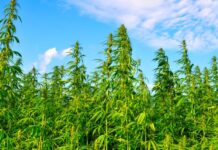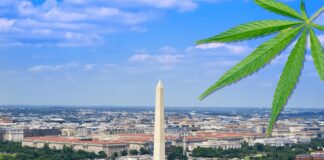
In a recent Congressional Research Service (CRS) report published in November, alarming statistics indicate a drastic decline in hemp cultivation across the United States. The report, drawing on data from the U.S. Department of Agriculture’s 2021 and 2022 National Hemp Report, reveals a nearly 50% reduction in hemp planting from 2021 to 2022.
According to the CRS report, the total acreage dedicated to hemp cultivation plummeted from 54,152 acres in 2021 to a mere 28,314 acres in 2022. Even more concerning is the 71% reduction in the farm-level value of total utilized hemp production, dropping from $824 million in 2021 to $238.4 million in 2022.
Breaking down the data, the report underscores significant declines in various sectors of the hemp industry. The value of hemp grown outdoors for flower experienced a staggering 71% decrease, plummeting from $623 million in 2021 to $179 million in 2022. Indoor cultivation for flower fared no better, witnessing a 62% decrease from $64.4 million in 2021 to $24.7 million in 2022.
The downturn extended beyond flower production, with hemp grown outdoors for grain experiencing a 40% reduction in value from 2021 to 2022, dropping from $6 million to $3.6 million. Hemp fiber value decreased by 32%, falling from $41.4 million to $28.3 million, while hemp grown outdoors for seed witnessed an alarming 96% decrease from $41.5 million to a mere $1.5 million in 2022.
Indoor cultivation also faced significant setbacks, with the value of hemp grown indoors dropping from $64.4 million in 2021 to $24.7 million in 2022. Notably, the value of hemp grown indoors for seed experienced a staggering 98% decrease, plummeting from $23.7 million in 2021 to a mere $600,000 in 2022. Similarly, hemp grown indoors for clones saw a 97% decrease, falling from $23.8 million to just $700,000.
The CRS report points to the USDA’s estimation that approximately 20% of hemp grown exceeds legal THC limits, suggesting potential risks to farmers operating within the USDA’s regulatory framework. This revelation raises questions about the role of regulatory challenges in the substantial year-over-year reduction in hemp cultivation. As the hemp industry grapples with these challenges, stakeholders are closely monitoring the landscape for potential policy adjustments and market shifts in the coming years.
Read the whole article here.










